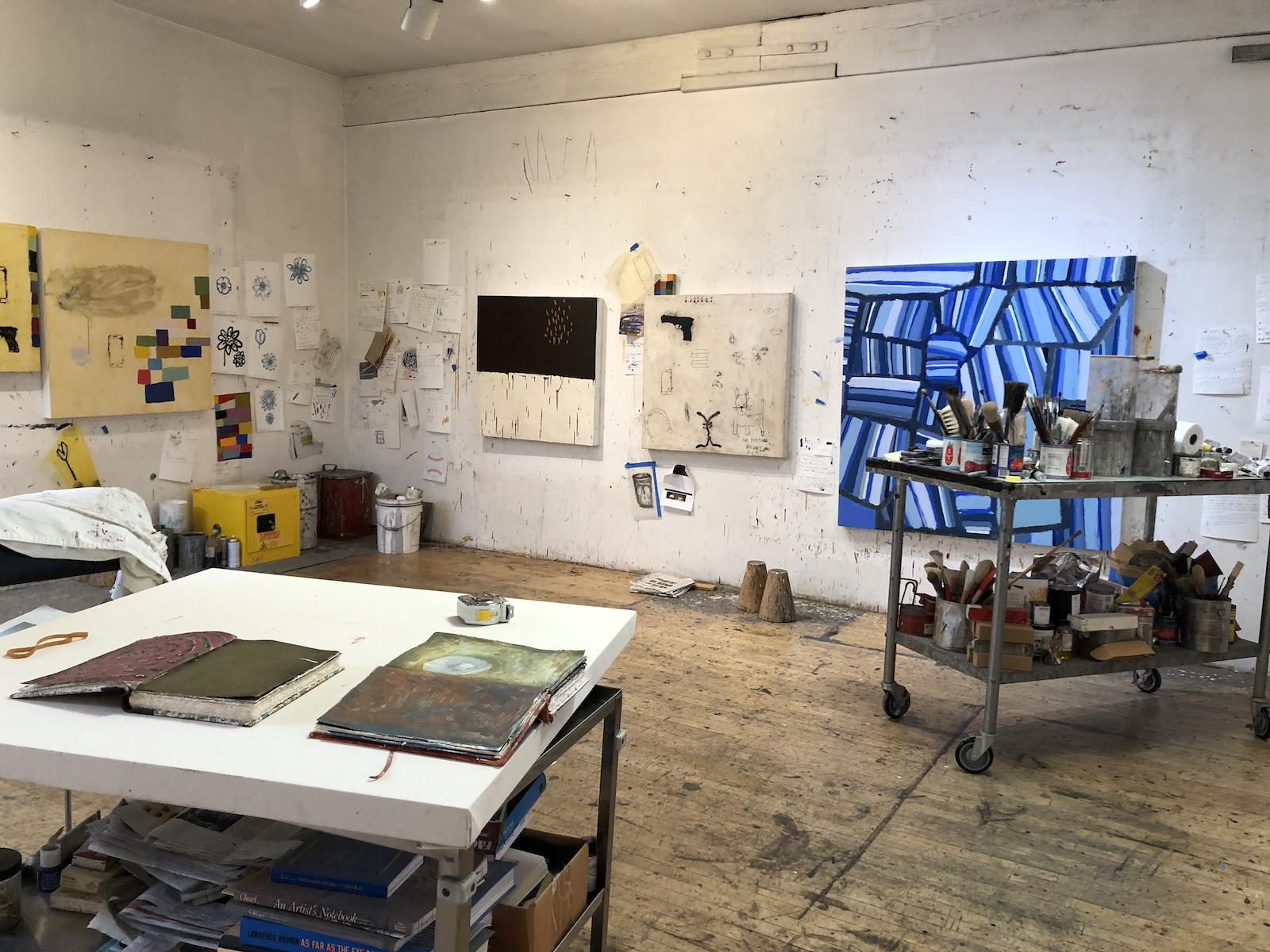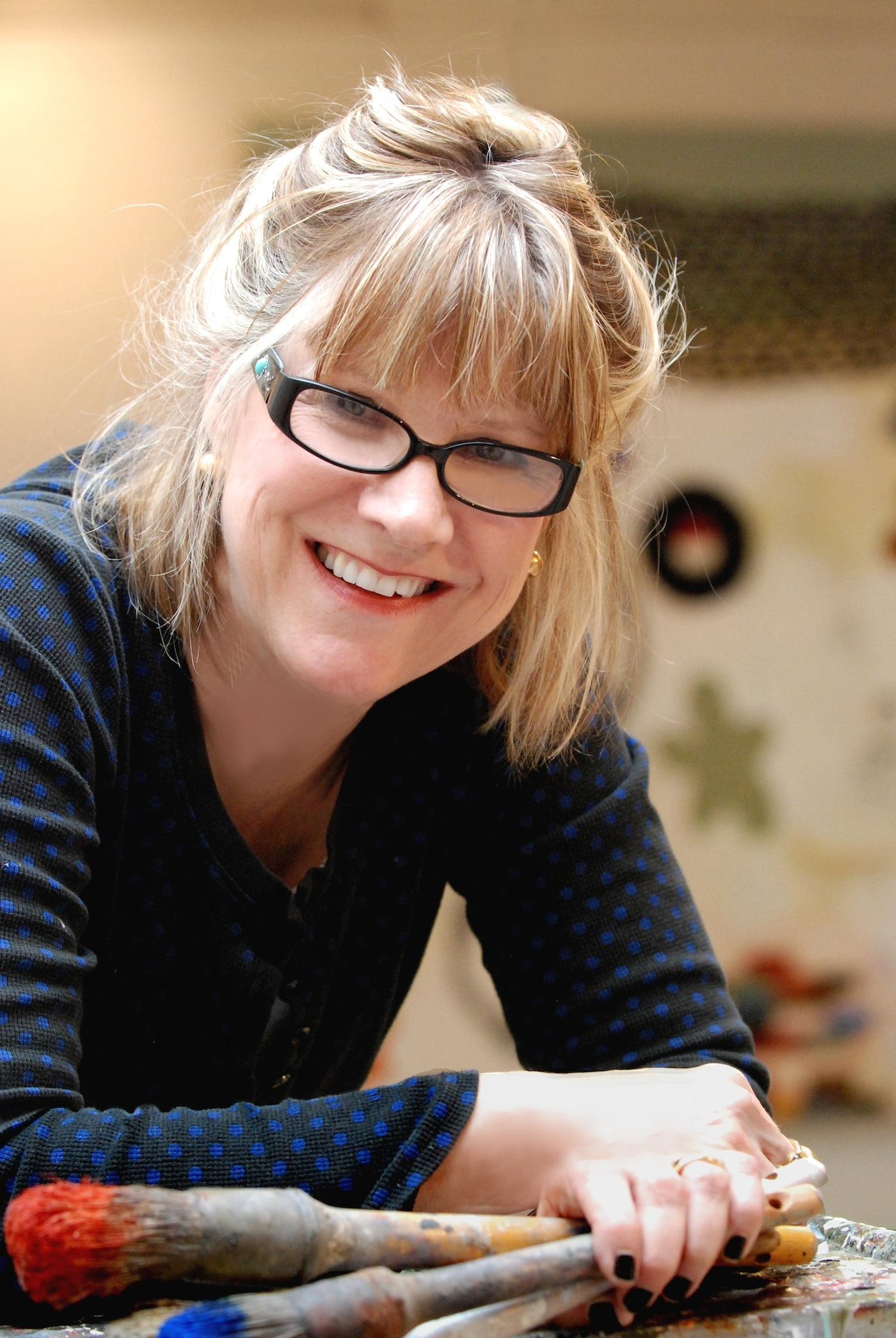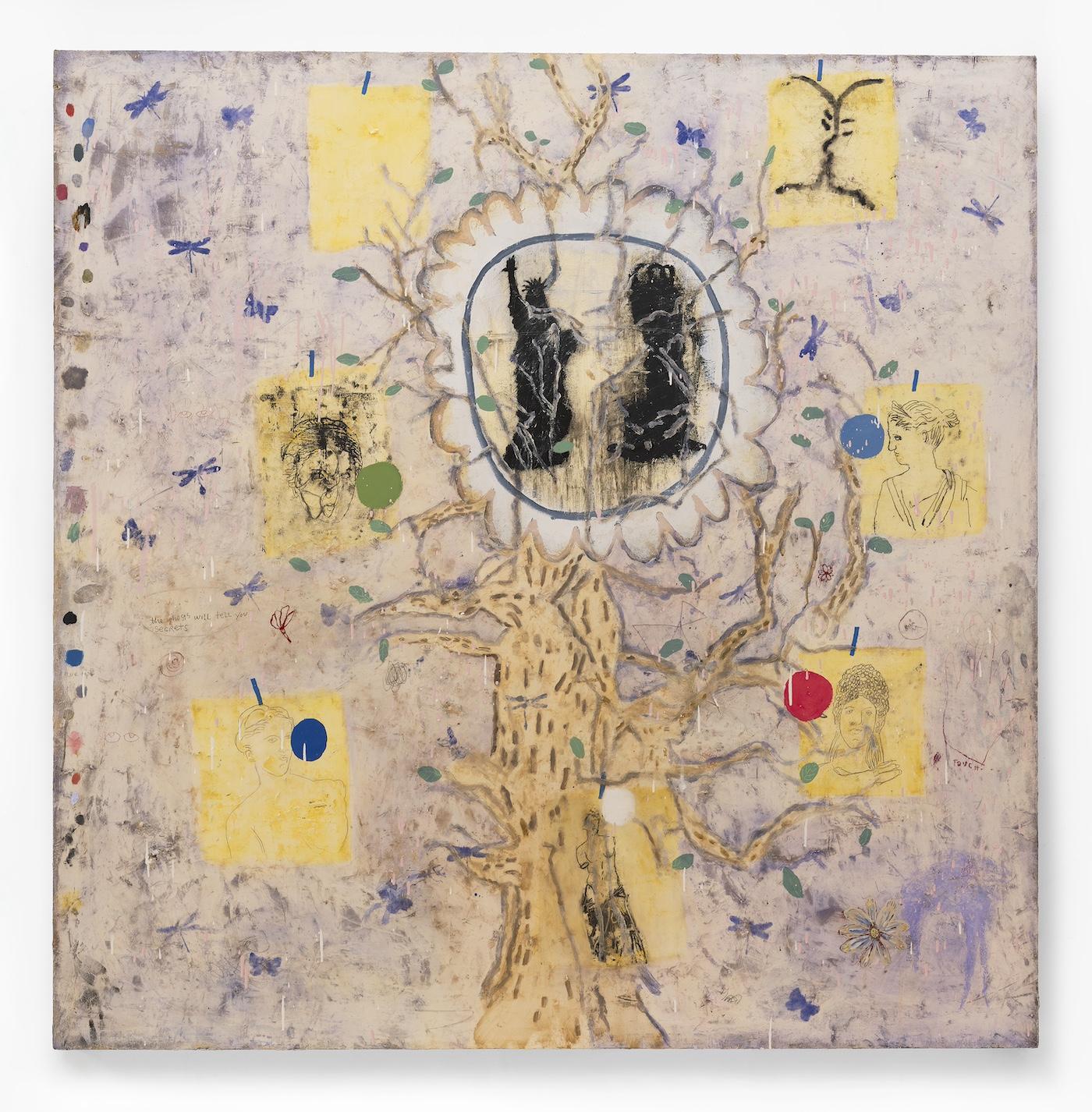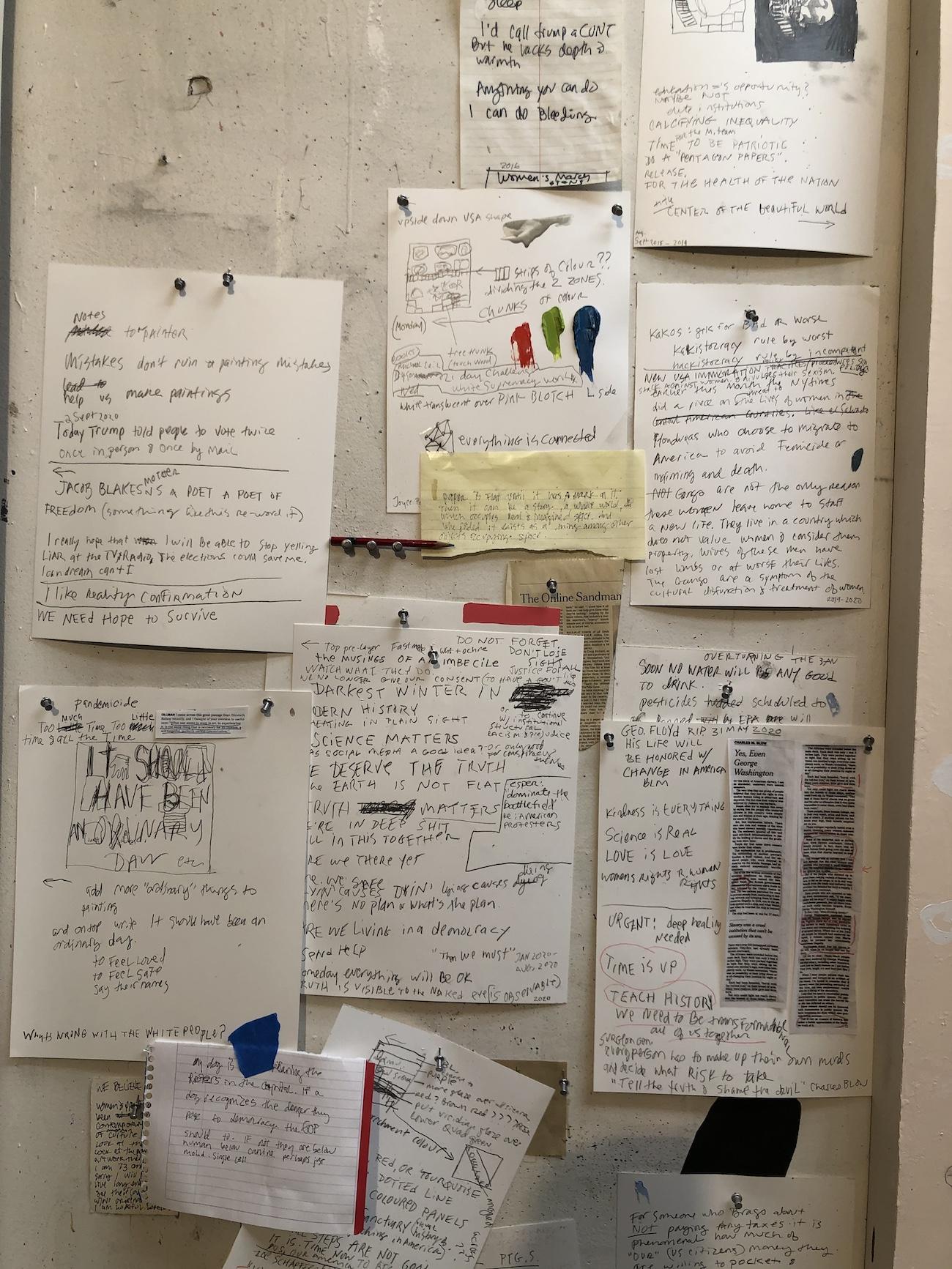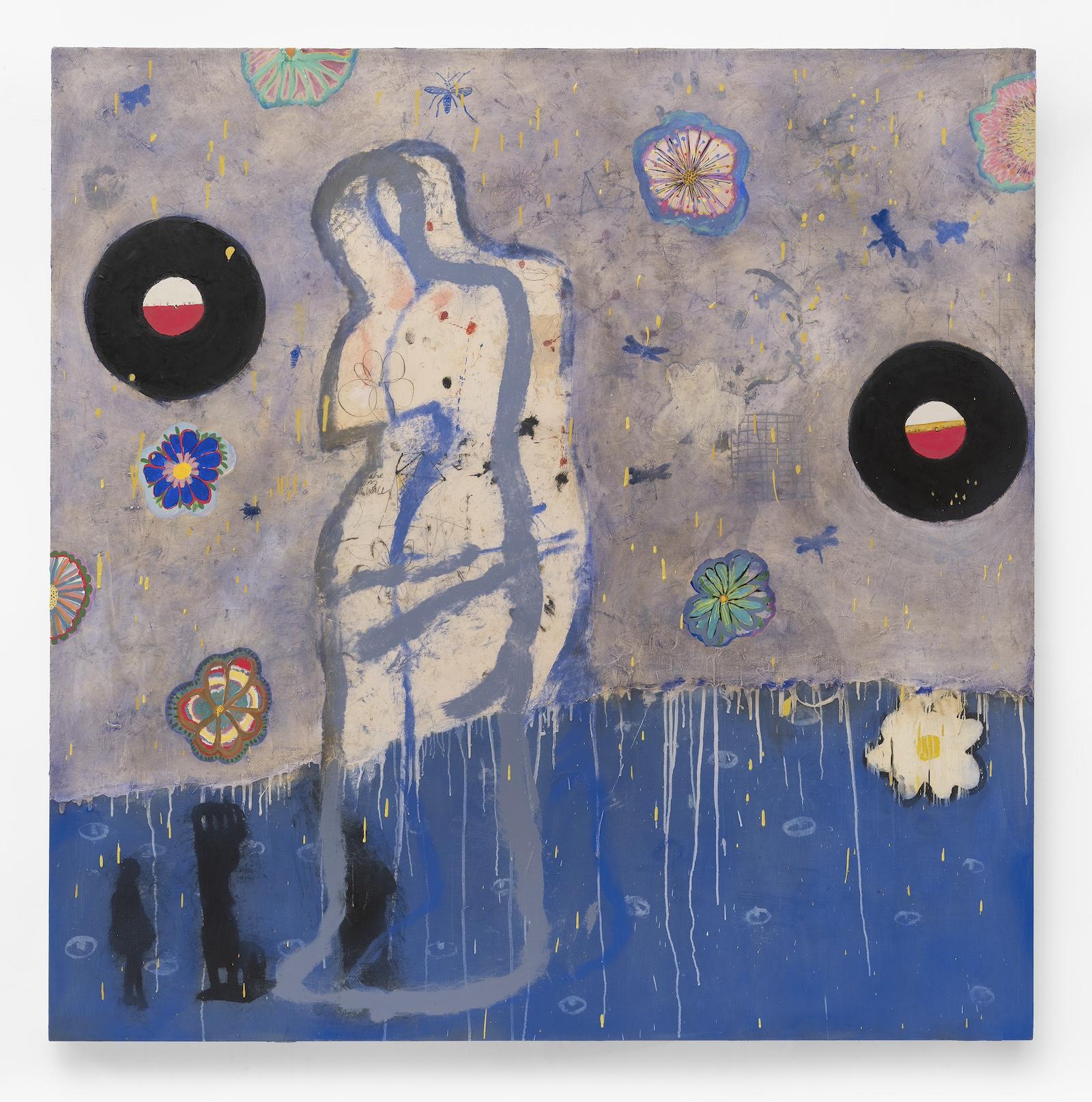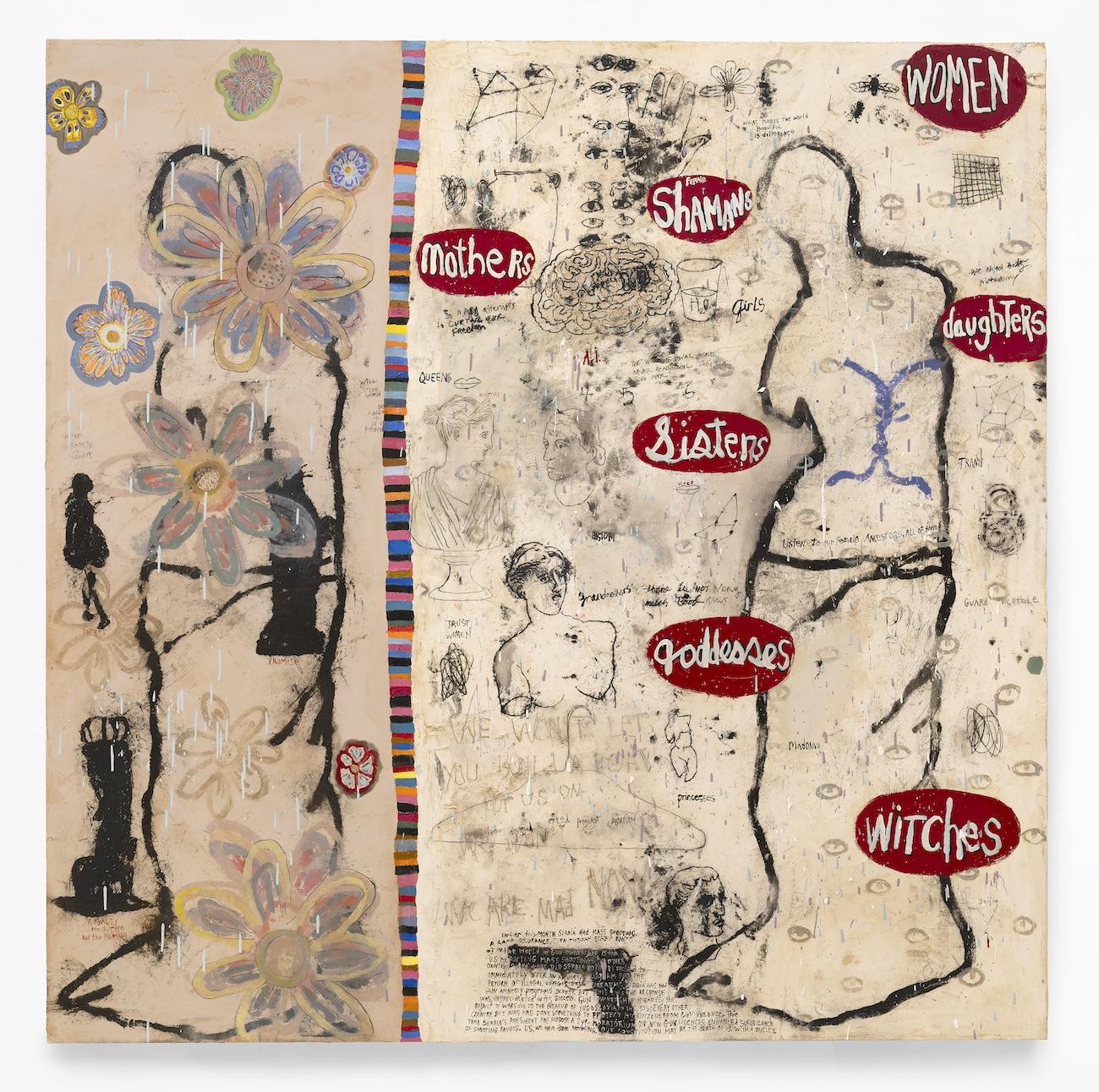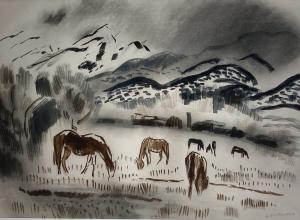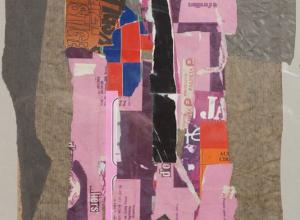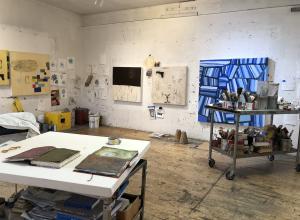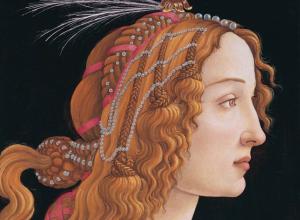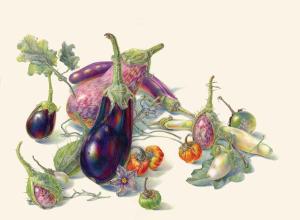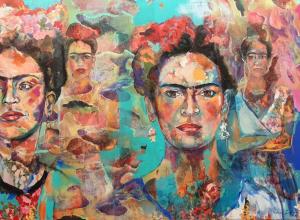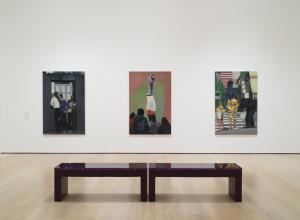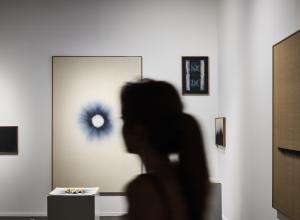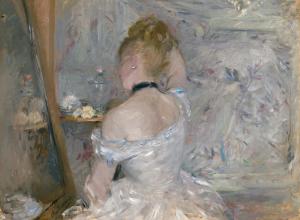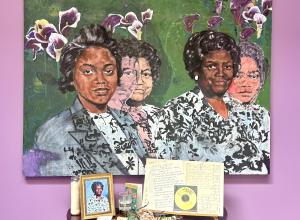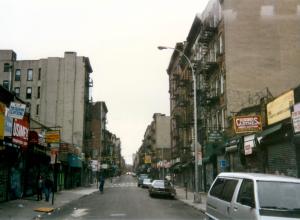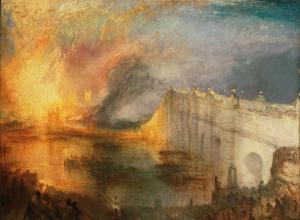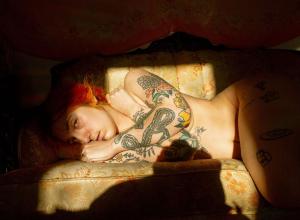Megan D. Robinson: What got you into painting?
Squeak Carnwath: I always liked to make stuff. When I was four or five, I took out all the powdered things from the low kitchen cabinets. . . and drew in them, making patterns. I don't remember getting into trouble for it.
Another beginning place was when a friend of mine told me about his kindergarten and how they had paint and clay and naps and cookies– the whole thing. I was going to some academic kindergarten. It was awful. So, I told my mother and father I wanted to go to Christopher’s kindergarten.
Then, when I was in fifth grade, I started painting in oils. There was an art class at night– mostly for retired people. This guy had a studio and a little art store. . . So, I’ve been painting since the fifth grade.




